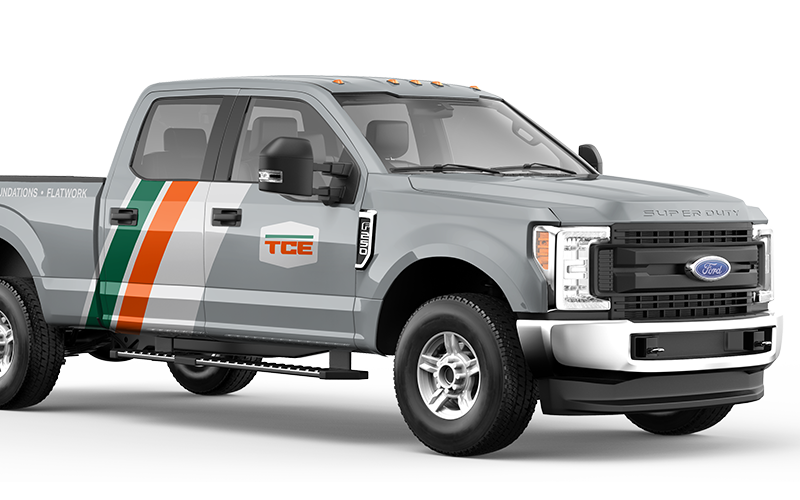Planning a Successful Trade Show (Includes FREE Checklist)

Perhaps you’re thinking of participating in a trade show or already have a few under your belt. Perhaps you know that at any stage of the marketing process, a trade show or conference can help boost interest, confidence and loyalty to your product or services. If you’re looking to bolster your resources and knowledge on planning a successful marketing event, read on.
According to the Center for Exhibition Industry Research (CEIR), there are more than 14,000 trade show events held annually in North America (1). While there are hundreds of reasons people attend these trade shows, “51% of attendees plan on buying a product or service and 82%...[use] the trade show to influence their buying decisions” (Exhibit Surveys). It’s fair to say that at least half of the people who attend trade shows go with an intent to do business in some shape or form.
With that information in mind, many industrial and manufacturing businesses use trade shows and conferences to their advantage. Seventy five percent of those who attend such in-person marketing events say they are effective, with 74% saying they had a more positive opinion of the company, brand and/or product or service and 87% saying they purchased a company's product or service after the event (3,4).
Before we start, download our Trade Show Planning Checklist to give you an overview of what we’ll cover. Be sure to print it out and make personal notes to help you throughout the marketing event planning process.
Now that you have your checklist in hand, let’s dive into the steps to planning a great trade show event!
1. Set Goals
It probably goes without saying, but we’ll say it anyways: You need to set goals. Before you even begin to plan your event, you must outline your end objectives.
Ask yourself and your event team these questions:
- Why are you planning on attending? To generate brand awareness? To generate new leads? To educate prospects?
- Will our buyers be there?
- What differentiates us from the competition?
- Are we offering something that attendees will find worthwhile?
In addition to these questions, set specific, measurable goals. Work backwards, in terms of setting a number. How many prospects or meetings lead to a profit of $10,000?
Once you have those numbers, set goals like:
- Gain 50 leads by the end of the conference.
- Schedule 25 meetings.
- Hand out 100 demo products or white papers,
- And so on…
2. Make a Game Plan
You can never plan enough for a trade show or conference. More planning ahead of time equals less stress in the long run. As a general rule of thumb, make a point to plan at least 6 months ahead of your trade show date.
To begin creating your game plan, decide on your main message or theme for the event. What are you going to sell? What main service are you going to pitch? What do you want people to know about your brand?
Once you have answers to these questions, make sure you delegate tasks so that everyone on your team understands the goals of the trade show. Often this comes in the form of an Event Strategy Brief or Event Marketing Strategy. The gist of these strategy plans are to outline what needs to done when and by whom.
With a strategy in place, you’ll then want to focus a good chunk of your time on your booth design. Yes, we know we’re slightly biased when it comes to design oriented marketing, but standing out from the crowd is key.
When it comes to booth design, your goal is to grab people’s attention. The best way to do this is to hire a branding designer or marketer. Sorry, no you can’t just pick up a corrugated display board from Staples. You’ll need to create something memorable; something that will attract attendees and draw them in from across the room. Working with a professional designer can not only boost your perceived value but also help you think outside of the box when it comes to promoting your business.
Some attention-grabbing examples for trade show booths include art show like showcases of products, lounge-like areas for attendees to sit down and chat, interactive displays and much more.

Along with making your trade show booth stand out, you’ll need to emphasize your message. Like your other company branded material make sure your message is clear, concise and recognizable. Also think of the main function of your booth. Will you be doing a presentation? Are you mainly displaying products? Are you more service oriented, therefore will you have more information to display? Etc.
Another thing to keep in mind is your location of your booth. How close are you to main stages? Bathrooms? Entrances? Lounge areas? Main aisles? Etc. While you may not have too much control over where your booth is located, strive to find a location on or near the center aisle (if there is one,) near the entrance of the venue. While there is no hard rules to finding the best booth location, attendees tend to turn to their right when entering a venue and tend to show more interest in booths when he or she first enters vs. booths that he or she experiences farther into the venue.
Last, but not least, think about your staffing for the event. Who are your best salespeople? Who will represent your company? In general, think in terms of who would be a good host. While yes, one of your main priorities during a trade show is to gather leads, it’s important to approach attendees as guests rather than numbers. Lastly, don’t forget your support staff, those who will help you set up and tear down, handle technology or run errands if need be.
3. Promote, Promote, Promote
Think of the trade show or conference as your own event. Don’t rely on the conference to promote itself. Your overall trade show experience will be more successful if you promote before, during and after the event.
In essence, simply let people know you’ll be there. Utilize all your marketing channels.
- Social Media
- Whether you choose to spend money on social media to promote your trade show booth is up to you, but no matter what, don’t neglect it. Make an event on Facebook, post about the who, what, why and where, share exciting previews of the trade show and encourage your friends and colleges to share the news.
- Send out an email campaign a couple weeks before your event, then the week of your event to remind people where you’ll be and what exactly you’ll be presenting at the trade show. Offer special deals or enticing swag to further encourage attendance. This is also a great way to track who actually comes to your event from your current leads.
- Blog
- Why not write a quick article based on your upcoming event? For example, if you’re going to a conference concerning robotics, why not write an article about upcoming trends in the industry? Whatever you write about, make sure the article is “evergreen,” in other words an article that’s relevant for some time.
- Flyers (and other old school methods)
- While it is the age of technology, might as well check all your p’s and q’s and tape up some flyers as well. These can just be the generic trade show or conference flyers from the actual event itself, but make sure to include a note detailing where you’ll be at the trade show. Place these flyers where you know your specific audience will see them.
Mention the event to everyone you know and meet with. Again, if you know they’re interested in your products or services, mention you’ll have an exclusive deal at the event.
4. Be Present
Just because you made it to the trade show, doesn’t mean you can just sit back and wait for others to approach you. This is the time for action and activity.
- Network
- Start conversations. As mentioned before, don’t just sell your products/services or immediately ask for contact information. Ask why they’re there, if they have a booth at the event as well or what problems they are looking to solve. Simply by striking up a conversation you can begin to learn their priorities, strengths and weaknesses, and what you could possible provide for them. Set up meetings at later dates if they want more specific information. At the very least, you can exchange business cards (better have them on hand!)
- Present Yourself Well
- Make sure to wear the appropriate attire and always appear approachable. This means smiling, standing up vs hiding behind a table and making yourself unavailable. If you are preoccupied with one interested attendee but see another waiting, be sure to acknowledge them. Basic customer service rules apply here.
- Give Demonstrations/Presentations
- Give demonstrations of your product regularly throughout the trade show. If you don’t have a physical product, perhaps set up a slideshow showing attendees what you do. Offer case examples and pictures and videos of past projects. If you’re giving a presentation (whether at your own booth or at a stage within the conference) be sure to let attendees know throughout the day, reminding them to come back.
- Offer Exclusive Deals and/or Swag
- Give attendees a special deal when they choose to buy a product or service during the event. As mentioned before, offer to set up meetings at later dates, free of charge if they are interested. In addition to offering exclusive deals, hand out unique and actually useful giveaway items. For example, if your target market is the engineering crowd, give away metal mechanical pencils, erasers, and an engineering writing pad. For those that sign up for a meeting later, give a well-made branded sweatshirt or backpack. Something that will be used and (hopefully) seen out in the world.
- Talk to Other Exhibitors
- Do some exploring of the event yourself. Get to know who will be there and make an effort to talk to those you wish to get to know or potentially do business with. If both parties are alright with it, be sure to exchange information and leads you’ve gathered. You never know what you may be able to learn from your fellow trade show professionals.
5. Measure Your Results
Phew! You made it! You’ve promoted your brand and products/services superbly and now have a nice new list of leads. But, before you start sending out a mass email or immediately calling those you met, take an appropriate amount of time to make a plan.
Before the Event
Yes, we know we’re kind of taking a back step here, but hear us out. It’s important to follow up on leads soon, so you need to plan ample time to reach out to those leads you met during the event BEFORE the event itself. For example, if the event runs Thursday through Friday, make sure the following week you have scheduled out a few hours exclusively for meetings. If you wait any longer than two weeks after an event, the momentum you created during the trade show can lose its effect.
Speaking of momentum, make sure people have a reason to want to get back in touch with you. That’s where your special discount, promise of an exclusive product or a free meeting comes into play. Be sure to put a due date on your specials too to encourage people to check in sooner, rather than later.
Here’s a real life example. During a recent trade show, we offered attendees a chance to check out how their website was fairing with a free one page SEO Audit. While they were with us, we quickly took their information and began to run the report. For a few minutes we went over basic things we saw they were doing well and what they could improve on. We then mentioned we would send them an email the week following the show and offer them a chance to have another meeting with us to go over the full SEO report. Not only did this give attendees an idea of what we could provide for them, it also gave them an incentive to get back in touch with us after the trade show.
Once you have plans like these in place, organize a system to categorize leads. Tag them according to industry, job title, interest, etc. in your CRM (if you have one) or simply on paper. You could also categorize leads according to importance, for example those that explicitly had a conversation with you, those that stopped by just for a short look, and those that simply left their name on a list. Ultimately, organize your leads in whatever way makes sense to you.
After the Event
Once you have a nice list of contacts and have them organized, consider starting an email campaign. This is a great way to keep you in the mind of all your contacts and to remind them you valued meeting them. An example of an after trade show email campaign might include:
- A thank you email
- Quickly thank attendees for visiting your booth. Clearly state that you wish to hear from them if they have any questions or comments about your services or products.
- Review email
- Restate why you were at the trade show, what you are offering and how exactly you can help potential clients. Ask them to reach out to you if they are interested in setting up a one-on-one meeting.
Along with this email campaign, make sure you are following up with those that explicitly asked for a meeting with you. Those that you listed as “hot” leads, or those that seemed interested in your service but didn’t ask for a meeting, make sure to send them a more personalized message.
At some point shortly after the event, be sure to review what went well, what didn’t and what you should try next time, whether for the next trade show or for your business in general. Sit down with the team that worked with you at the event and review, making sure to get everyone’s perspective. What you may have thought as working well may not have looked as great to another on the team and vice versa.
Last, but not least, plan for the next event! Try different trade shows, conferences or other industry events. Experiment with booth designs, demonstrations, networking tactics and more. Ask other professionals where they find success in events and where you could improve.
Do you need help with your next tradeshow booth? We offer a two-week turnaround time to design, create, and ship event displays directly to your location. Get a quote on retractable banners, display walls, canopy tents, advertising flags, and table covers.
If you are interested in learning more about our approach to the items discussed in this article, call (970) 744-3611 or send us an email so we can talk about what that would look like.


